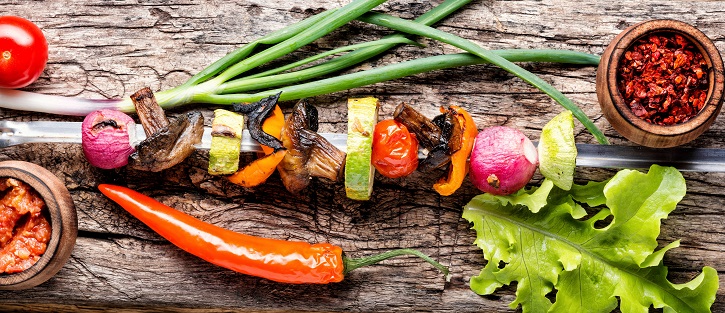
What exactly is “eating to thrive”? It means eating healthy foods that provide you with the nutrients you need in order to partake in activities of daily living and yet doesn’t result in weight gain. Eating to thrive involves eating foods from all the different food groups in quantities that are nutritious and yet don’t cause you to gain weight.
What to Eat
When you’re eating to thrive, you need to stick to eating foods from all the different food groups and you need to pay attention to the number of calories and the amount of nutrition in each food. You also need to eat foods from all of the food groups so you get a balance of protein, carbohydrates, and fat.
This is a typical diet you need to stick to in order to eat nutritiously and to eat the foods that are the most nutrient-dense:
Vegetables
Eat about 2-3 ½ cups of these per day. If you are eating leafy greens, two cups a day are about what you should eat. Vegetables should take up about half of your plate.
Cooked and canned vegetables are relatively healthy for you but, if you can eat food at its rawest source, this will be healthier as some nutrients are lost in the cooking process.
Fruits
Eat about 1 ½ to 3 cups of fruits per day. If you are eating dried fruit, limit intake to only about a fourth of a cup per day. A two-inch peach is the same as one serving of fruit. Fruits are nearly as healthy as vegetables but contain more simple sugars.
While vegetables are relatively high in complex carbohydrates, fruits contain fructose, which is a simple sugar that is turned into glucose in the process of metabolism. Berries are a great choice as they are very low in sugar content.
Dairy
Eat about 3 cups of milk that is free of fat or low in fat. If you’re not a milk drinker, try 1.5-2 ounces of cheese or a cup of yogurt instead. If you like cottage cheese, know that a cup of cottage cheese equals about a half cup of milk.
Dairy products provide good non-meat sources of protein and are excellent protein sources for those people who prefer not to eat a lot of meat.
Protein
Eat about 5-7 ounces of protein per day. A serving of meat should just fit in the palm of your hand. If you’re not a meat eater, eat an egg, a quarter cup of tofu or cooked beans, a tablespoon of peanut butter, or a half ounce of seeds or nuts.
Most proteins come from meat sources, but, as you can see, there are plenty of non-meat sources of proteins for people who choose not to eat meat or can’t eat meat for health reasons. Non-meat sources of protein also tend to be lower in saturated fats and can be healthier for you.
Grains
Eat about 5-10 ounces of grains per day. One serving is a half cup of cooked pasta or rice, a slice of bread, a cup of cereal, or one small muffin. Whole grains are better for you when compared to processed grains.
Healthy Oils
You should eat about 5-8 teaspoons of oil per day. If you’re counting servings of oils, you need to know that you can get healthy oils by eating avocados, nuts, and olives, as they are high in oil. Otherwise, just measure out some oil in a teaspoon for cooking in the amount listed above.
Olive oil and coconut oil tend to have the healthiest fats in them so you should try to stick to these oils while cooking. Hemp is a wonderful oil to use in salad dressings and other non-cooked foods.
What Not to Eat
Added Sugar and Solid Fats
There is no recommended daily allowance for these foods so you should limit your intake and stick to healthier foods instead. Foods high in sugar and solid fats are high in calories and won’t provide you with the nutrition you need.
One rule of thumb is to avoid adding sugar to anything you eat. There are plenty of sugars and fats in healthy foods so you don’t need to add more. This doesn’t provide you with extra nutrients and will only add to the caloric content of the food you eat.
Chips, Soda, Cookies, and Alcohol
You should stay away from these types of foods altogether. They only provide empty calories and are not at all nutritious. The only alcohol you should be consuming is red wine, which provides you with some cardiovascular advantages.


